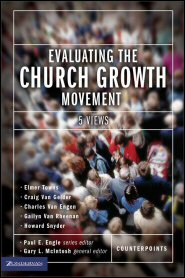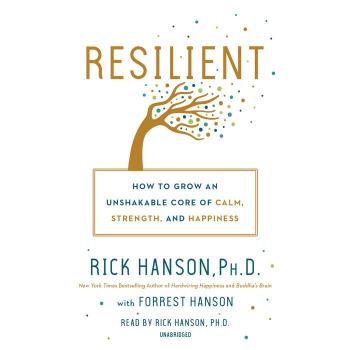
As the title implies, this is a book that allows the reader to evaluate five views about the church growth movement. As such, this allows the reader to make an informed decision about this movement. Whatever view a reader has about the church growth movement will affect how one approaches the church planting ministry. This reviewer must confess on the outset that book was confusing. The reader should have a working knowledge of the church growth movement while reading this book. The five views include the (1) effective evangelism view (pro- church growth movement view explained by Elmer Towns), (2) the Gospel and Our Culture view, (3) the centrist view, (4) the reformist view, and (5) the renewal view.
The introductory chapter provides an insightful review of the church growth movement and its history in the twentieth century. This introduction helped the reviewer to grasp a view of the historical background of this view and how it developed. While reading this chapter, the reviewer discovered that this was the primary view of the Southern Baptist seminaries and pastors in the past thirty years. It is clear that Rick Warren greatly influenced the modern expression of this movement. However, discovering the founder Donald McGavran and his influence helped to explain why many churches try to use this model.
Apparently, there are degrees of acceptance of the Church Growth movement. If the views were to be charted on a continuum, the effective evangelism view would be the most pro-church growth view. This would be followed by the Gospel and Our Culture. This view holds that the church growth movement only needs to improve its view of the church. The centrist view is naturally in the middle. The reformist view says that the theology is correct, but that the application is flawed. Finally, the renewal view needs to “renew” its view of the church to be effective.
Apparently, there is much to be critiqued about the church growth movement. While reading the effective evangelism view, this reviewer realized that the church growth movement behaves more like a science and less like a theological framework. The church is a social institution (37). Towns mentions that as the church has moved into the twentieth century, she has “more enlightenment than in past ages.” One wonders if the age of the Enlightenment has influenced the church growth movement (53).
The church growth movement shares the impression that the numerical growth of the church is the most important factor in the work of the church. Thus, the church needs to build more buildings and use an attractional model to justify its actions. However, this reviewer agrees with Van Rheenen in his critique that churches who plant new churches will be more effective than megachurches (61).
The Gospel and Our Culture view (GOC) shares the insight that there is a important distinction between “church growth” and the growth of the church. “Church growth” places the emphasis on growth, while the focus should be placed on more than just the growth of the church. The church should be the noun and not growth (89). In other words, the church is more important than its growth. In response to the GOC view, reformists show that the GOC is theocentric while the church growth movement is anthropocentric (114). One wonders that if this is true, why are so many churches using such a humanistic or self-centered theological perspective.
The centrist view would seem to be good except for all those charts. It seems that there is an attempt by the centrist to juxtapose the church growth movement with the many factors that may influence its growth (145). While this reviewer appreciated the thesis, it seemed a bit overworked and difficult to show.
The reformist view (which can probably be known also as the missional view) finds the most kinks in the armor of the church growth movement. The set of limitations (or weaknesses) of the church growth paradigm reveals the essential problem with that view. In basic terms, the church growth movement, like modernism is based primarily on human logic and observation (175). The church growth movement has an anthropocentric focus which seems to be attractive to modern seekers. However, in the postmodern era, there needs to be a new model. The church growth movement needs to be reformed for this postmodern age. Other weaknesses include the segmentation of theology and praxis (176-180), the theological level of inquiry – or the lack of it (180-182), the focus on numerical growth (182-186). This reviewer does not completely accept all the elements of the missional paradigm. However, the missional paradigm does seem to be the most effective for the postmodern age. The reformist view correctly starts with the Scriptural supports and then discovers the correct practices. The church growth movement is flawed because it begins with the cultural practice and then finds Scriptural support.
The modern church growth movement has morphed into a monster that the founder would never recognize. McGavran stated “it is God’s will that men and women become disciples of Jesus Christ.” Conversion was primary in his thought (194). The effects and results of the present church growth movement do not match the intent of the founder.
Because this reviewer may hold to the reformist view, one could find disagreement with the effective evangelism view. Despite the differences and disagreements, this book is helpful by sharing all the views concerning church growth. There may be many books that explain and apply one of the views. However, before a church planter starts his first church, he should read this book. This book will help him make up his own mind about church planting theology.












